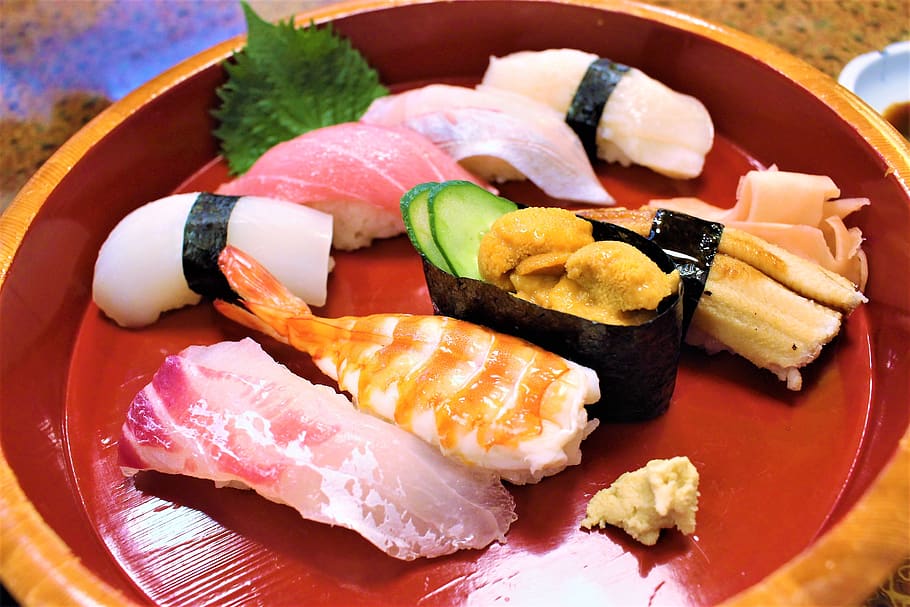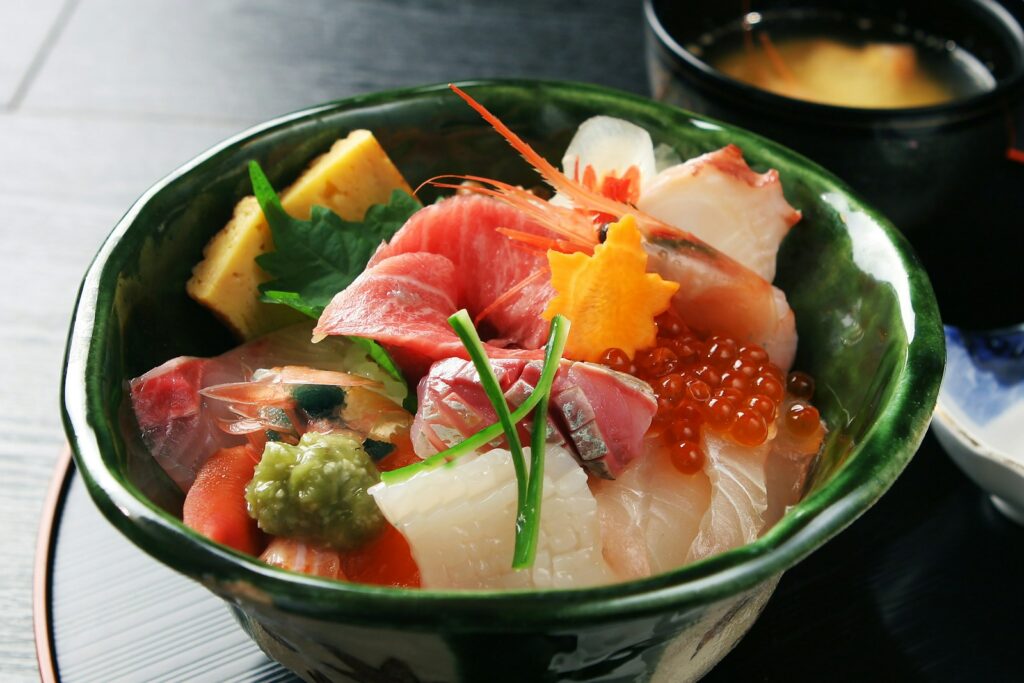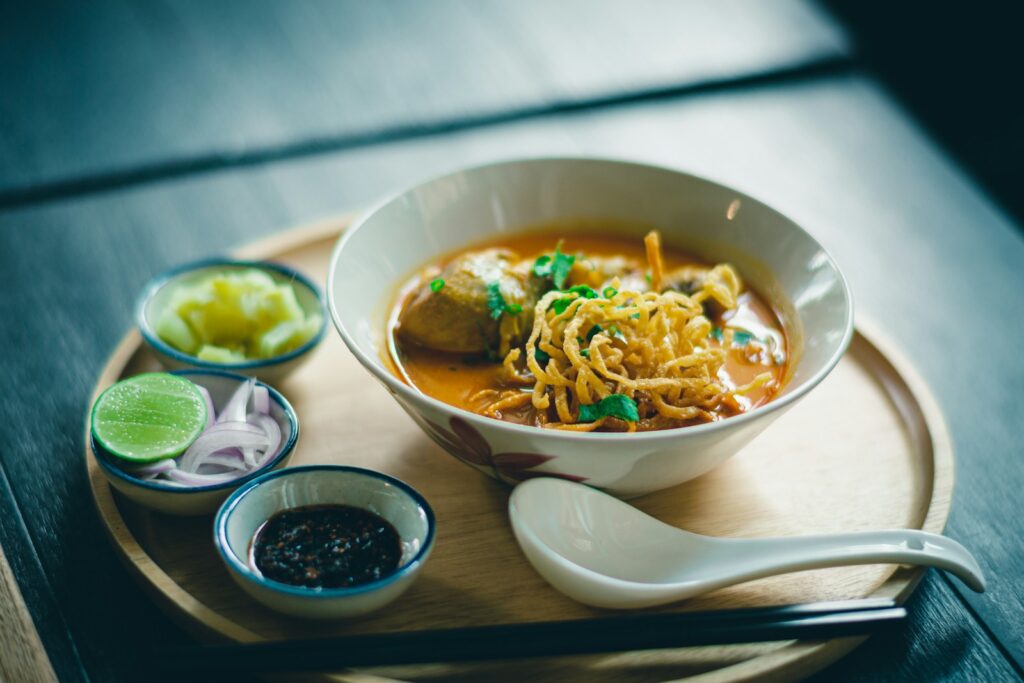The thrill of discovering new flavors and meals in a place rich with culinary culture! This is the narrative of my gastronomical experience in Kanazawa, a city flanked by the Sea of Japan, noted for its fresh fish and outstanding sushi. And let me tell you, sushi isn’t just food here; it’s an experience, an art form, and an amazing thrill for a sushi connoisseur like myself. Join me as I recount this incredible journey, bite by mouthful!
I was determined to dive deep into the native cuisine in Kanazawa, especially because sushi is my all-time favorite. The city did not disappoint. Every restaurant, market, and booth appeared to celebrate the ocean’s bounty with foods that were as fresh as they were wonderful. And with sushi being considerably more reasonable here than in other Japanese cities, it was like unearthing a treasure trove of culinary treasures without emptying my pocket.

Explore Omicho Market
My first trip was Omicho Market, a busy center of nearly 200 vendors offering fresh seafood directly from the Sea of Japan. It’s been the core of Kanazawa’s food culture since the Edo period, and discovering it was comparable to a sensory trip. The sight of ice boxes packed with crabs and the scent of grilled Atka mackerel irozuke set the tone for what was to be a day filled with delectable discoveries.
Kaitenzushi Okura-a, a cozy restaurant near Omicho Market’s entrance, offered an unbeatable lunch deal with their sushi sets. Imagine savoring ten pieces of sushi for less than USD 5 – a bargain by any standard, especially for such high-quality sushi. Here, I indulged in some of my favorites: unagi, amaebi, maguro, and inari. Each bite was a testament to the freshness and skill inherent in Kanazawa’s sushi tradition.

Ichinokura-As I ventured further, I stumbled upon Ichinokura, another gem within Omicho Market, specializing in kaisendon bowls. These bowls, laden with various types of raw seafood atop unseasoned white rice, were a colorful feast for the eyes and palate. The variety of seafood, including salmon, octopus, sweet shrimp, and crab, provided a snapshot of the ocean’s diverse flavors.
Kourin Sushi-My journey didn’t stop at sushi and kaisendon. I sought out Kourin Sushi, a restaurant praised for its affordability and excellence. Opting for the omakase set, I was treated to an array of sushi, including some blowtorched pieces that added a delightful smokiness to the meal. The experience was further enriched by the charm of Mawarusushi Ponta, located a bit off the beaten path but well worth the detour for its fantastic sushi deals.
Takasakiya-It is run by an adorable elderly couple and offers a more intimate dining experience. Their omakase set, filled with premium fish and local delicacies, was the perfect farewell meal, encapsulating Kanazawa’s warmth and culinary expertise.
But Kanazawa’s culinary landscape extends beyond seafood and sushi. I ventured into the world of kabura zushi at Shijimaya Honpo Yayoi, a snack food made with fermented fish and pickled turnips. Its unique flavor profile – a mix of sour, sweet, salty, and umami – was as intriguing as it was delicious. This peculiar dish, steeped in tradition, was a bold reminder of the diverse tastes that make up Japanese cuisine.
For those seeking a more formal dining experience, Kaga ryori at Shogyotei provided a multi-course feast that was both a visual and gastronomic delight. This meal, deeply rooted in local tradition, showcased the artistry and finesse of Japanese culinary practices.

And on rainy days, Kagura’s miso ramen offered a comforting reprieve from sushi, with its rich broth and heavy toppings functioning as a warm embrace.
No culinary adventure in Japan is complete without participating in a tea ceremony. The one hosted at Gyokusen-Inmaru Garden was an exercise in mindfulness, with each cup of matcha and taste of wagashi (traditional sweets) drawing me closer to the essence of Japanese culture.
With its rich gastronomic legacy, Kanazawa has left an indelible impact on my heart (and stomach). From crowded marketplaces to small sushi cafes, each meal honored the city’s wealth and skill. It’s a reminder that food is not simply nutrition but a journey, a tale, and a delight to be shared. Until next time, Kanazawa, thank you for the flavors, the memories, and the encouragement to return.
Related posts:
10 Kanazawa Restaurants You’ll Want to Fly For
Where To Eat Omakase Sushi In Miami For Under $100



